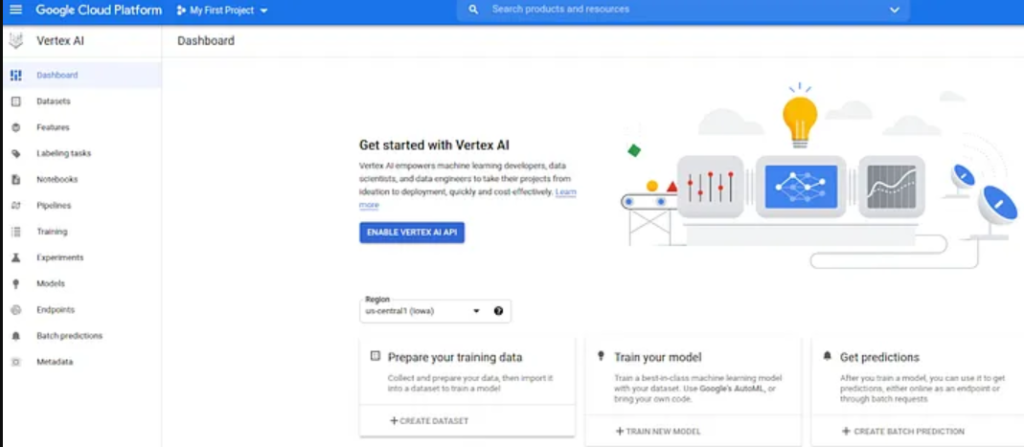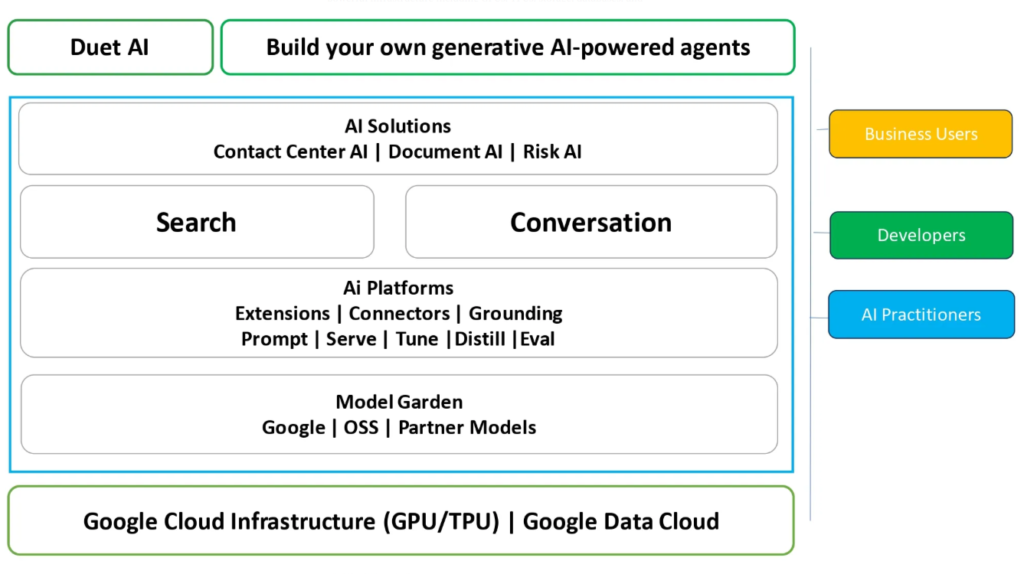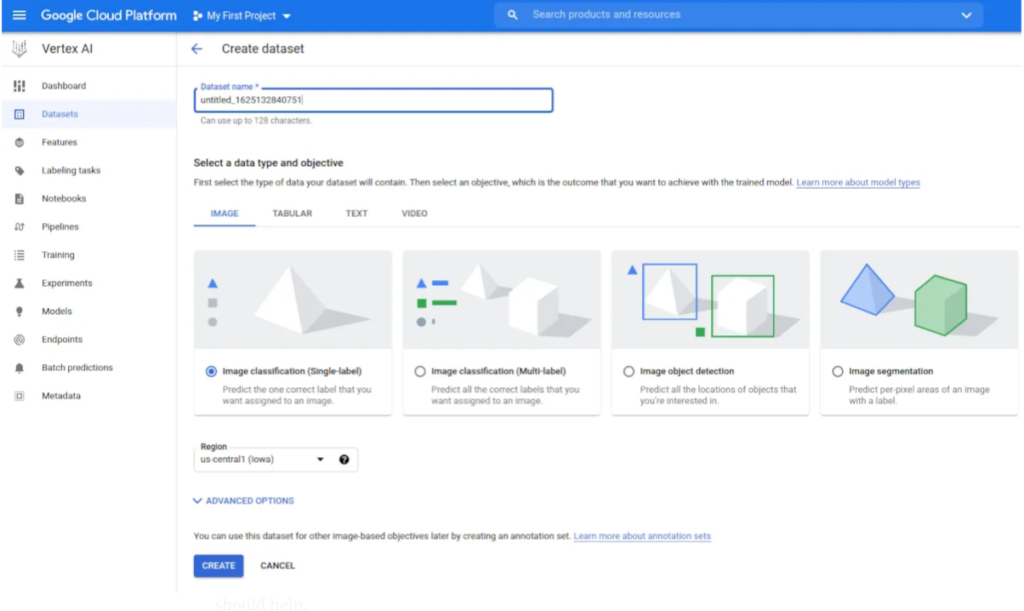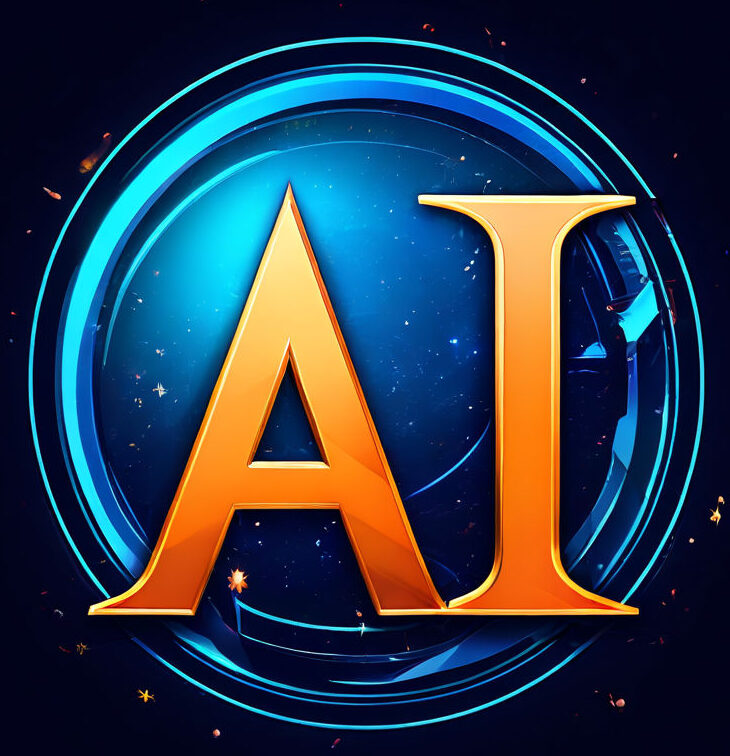Introduction
Vertex AI Google provides a large number of AI solutions for the different requirements.
This vertex search help to create and use for machine learning models. Freamworks help to align model development and service for tasks like a image processing.
This google cloud vertex ai is understand what people are tell/say about, translate there languages, understand spoken words into text, and turn text into spoken words.
Google Vertex AI
Vertex AI makes life easy for people who work with machine learning to build and use there models. It combination of many different tools and services into one place to make things easy and fast
Key features of the platform include AutoML tools that let users create custom ML models with normal coding. This makes the platform easier for more people to use.
Additionally, Vertex AI increase speeds up model development by using efficient methods for distributed training and tuning settings.


Google Vertex AI leverages Google Cloud’s robust infrastructure, which includes GPUs, TPUs, storage, databases, and server less platforms, It is the backbone for its architecture.
This infrastructure enables the seamless end-to-end machine learning workflow within Vertex AI.
Within Vertex AI, the Model Garden offers a repository of pre-built models and tools to accelerate model development.
With using Google Cloud’s infrastructure, for GPU and TPU to train large set of model across various tasks like computer vision, tabular data analysis and natural language processing.
Table of Contents
AI Platform Extensions enable developers to integrate trained models with real-time data from enterprise applications and APIs.
Developers using ai platform extensions enable to integrate trained models with real time data from enterprise app and APIs
Vertex AI helps build things like chatbots, search engines, and automated systems. It connects this systems to other tools that get data and information, which makes the systems work better over time.
It also provides connectors to help integrate with Google Data Cloud services like BigQuery, Cloud Storage, Dataflow and machine learning for data creation and analytics.
These connectors offer a unified approach I think using API to access and manage data within the Vertex AI system.
More over features such as prompt, grounding, search, and It is provide conversation empower developers to build generative AI applications.
Prompt provides predefined prompts and responses, You can ask questions and get answers like you would with a search engine.
It also shows you destination of the information it is google product right so everything is perfect.
In summary, architecture, coupled with features like autoML, model Garden, AI solutions, and integration with google data cloud, It helps you do everything from getting data ready to using and managing your machine learning models.
Powered by Google Cloud’s infrastructure, Vertex offers a scalable solution for enterprise AI requirements.
Model Garden on Vertex AI
To create a easy deployment of machine learning models google provide a collection of pre built models and tools. Model Garden provides enterprise-ready structure specific models that you want and also the API.
For enable users various process like models can use directly and communicate them with the generative ai or deploying to the data science.
Users can easily customize these models to the specific use cases by adjusting training data or hyperparameters.
Vertex Model currently supports three categories of Model Types: First-party models, Open Source models, and Third Party Models.
Major advantage is select a model from the list of model it is cost savings millions of dollar 😊 compared to the training foundation models from the scratch.
Training models will require more number of GPUs and number of days training it is typically demands.
One of the major features of vertex model garden is its ability to handle quick and seamless deployment of machine learning models in direct production environments.
This is made possible through integration with other google cloud platform services like google kubernetes engine and cloud functions, enabling users to deploy models as web services or serverless functions. By the way currenlty I am learning the azure kubernetes service for the deployment.
AI Platform

Extensions
AI Platform Extensions enable developers to integrate trained Vertex AI models with real-time data sources and APIs that already mention above.
These extensions facilitate use cases such as conversational assistants and automated workflows by ingesting data, extracting features, and routing requests to appropriate models.
Connectors
It is connectors seamlessly integrate with google cloud services like BigQuery, Cloud Storage, and Dataflow for efficient data preparation, analytics, and management. They provide unified access to datasets within the vertex workflow.
Serve
Vertex AI’s serve feature allows users to deploy machine learning models as web services, enabling real-time inference and predictions. Key points about serve include:
- Deployment of trained ML models as HTTP web services.
- Support for synchronous and asynchronous assumption.
- Automatic scaling based on traffic volume.
- Metrics monitoring for model health and performance.
Tune
Vertex AI’s Tune functionality optimizes the hyperparameters of machine learning models, enhancing their performance. Key features of Tune include:
- Automation of hyperparameter tuning using techniques like grid search and bayesian optimization.
- Support for major model types including TensorFlow, Keras, PyTorch, and XGBoost.
- Utilization of google cloud resources for parallelized training.
Distill
Distill in vertex ai compresses large machine learning models to reduce size and speed up times. It creates more efficient models that require fewer resources while maintaining performance.
Eval
Vertex AI’s model evaluation tools help users assess model performance and compare metrics across multiple models. This aids in decision-making during model deployment.
Prompt
Prompt Tuning in Vertex AI enables quick adaptation of pre-trained language models to new tasks. Users can structure prompts and label text content to customize model behavior.
Grounding
Vertex AI model extensions, data connectors, and features like search and conversation can be augmented with grounding, a feature that roots model outputs in company data.
In conclusion, google vertex ai offers a comprehensive platform that leverages google cloud’s infrastructure to deliver high-performance, scalable, and secure machine learning solutions.
Search & Conversation in Vertex AI Search, AI Conversation made generally available online
Search in Vertex AI is a groundbreaking tool for data scientists and developers, offering a seamless way to create comprehensive search applications.
With Vertex AI’s intuitive training pipelines, users can effortlessly train search models and deploy them as efficient search endpoints.
Additionally, developers have access to features like query suggestions, spelling correction, and query rewriting, all of which enhance the search experience.
On the other hand, conversation in Vertex AI empowers developers to craft AI-driven conversational interfaces and chatbots with ease.
Vertex AI Conversation offers a rich set of features including entity extraction, coreference resolution, response ranking, and response generation.
Furthermore, the integration capabilities of Vertex AI Conversation enable developers to connect their models to downstream systems for streamlined interactions based on user intents.
For further insights into the functionalities and use cases of search and conversation in Vertex AI, please refer to our comprehensive blog available through the following link.
Google Vertex AI Features List

A Unified Machine Learning Workflow Accessing tools like AutoML, Explainable, Vizier, Edge Manager, and more within a single platform can revolutionize your approach to machine learning model development.
With everything conveniently accessible from one central repository, including the option to utilize custom code for training, the efficiency and organization of your workflow are greatly enhanced.
Seamless Data-to-AI Integration The popularity of BigQueryML for creating and executing machine learning models using SQL queries is undeniable.
Vertex AI facilitates seamless integration by allowing access to BigQueryML and enabling the export of datasets into the platform. This ensures end-to-end integration throughout the workflow, enhancing efficiency and effectiveness.
Support for All Open-Source Frameworks Google Vertex AI offers comprehensive support for all major open-source frameworks, including PyTorch, TensorFlow, and sci-kit-learn. Regardless of the framework used, developers can approach model deployment with uniformity and ease, streamlining the development process and maximizing productivity.
In conclusion, Google’s Vertex AI platform streamlines machine learning workflows, accelerates development with pre-trained models and APIs, facilitates seamless data-to-AI integration, and offers robust support for all major open-source frameworks. With Vertex AI, developers can unlock new levels of efficiency and innovation in machine learning model development.
Also explore this new AI tools 10 Best AI Tools Anime AI Art Generator, Perplexity AI Copilot
